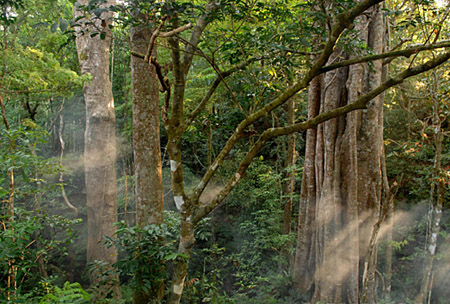
Tropical rainforests are found around the world along the equator, between the Tropic of Cancer and the Tropic of Capricorn. Tropical rainforests receive at least 80 inches of rain per year and some have seen as much as 400 inches in a year. The temperature remains between 70 and 90 degrees F year round.
About 50% of animals and plants come from the tropical rainforests and according to ETE, a NASA directed Classroom of the Future, the rainforests provides "a constant supply of water and wide variety of foods for the animals." It is believed that many animals and plants are yet to be discovered and much of the rainforests have not been explored.
The warm, humid climate of the rainforest allows for the rapid growth and decomposition of plants. The tropical rainforest is broken into four layers, each having diversity within themselves. The four layers of the rainforests are the forest floor, understory layer, canopy layer, and the emergent layer.

The forest floor is dark and almost no plants grow in this area. Decomposition happens quickly because of the lack of sunlight. What would take a year to decompose in a regular climate only takes about six weeks to decompose in a tropical rainforest (Layers of the Rainforest).
The understory layer received little sunshine and the plants in this layer grow only to about twelve feet and the leaves grow very large in order to reach the sunshine. Many animals and insects live in this layer (Layers of the Rainforest).
The canopy layer is home to many animals, including frogs, toucans, and snakes. Food is abundant in this layer and it is considered the primary level of the rainforest (Layers of the Rainforest).
The emergent layer is home to the tallest trees that reach 200 feet. Bats, birds, butterflies and monkey live in this layer of the rainforest (Layers of the Rainforest).
Layers of the Rainforest - http://www.srl.caltech.edu/personnel/krubal/rainforest/Edit560s6/www/whlayers.html

No comments:
Post a Comment